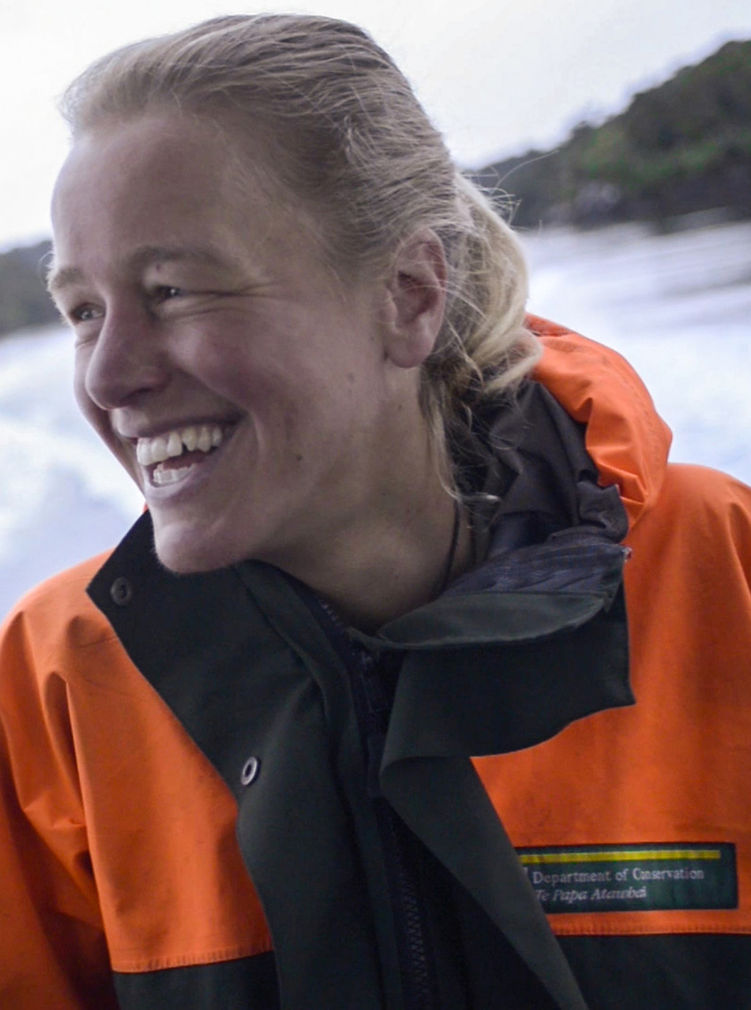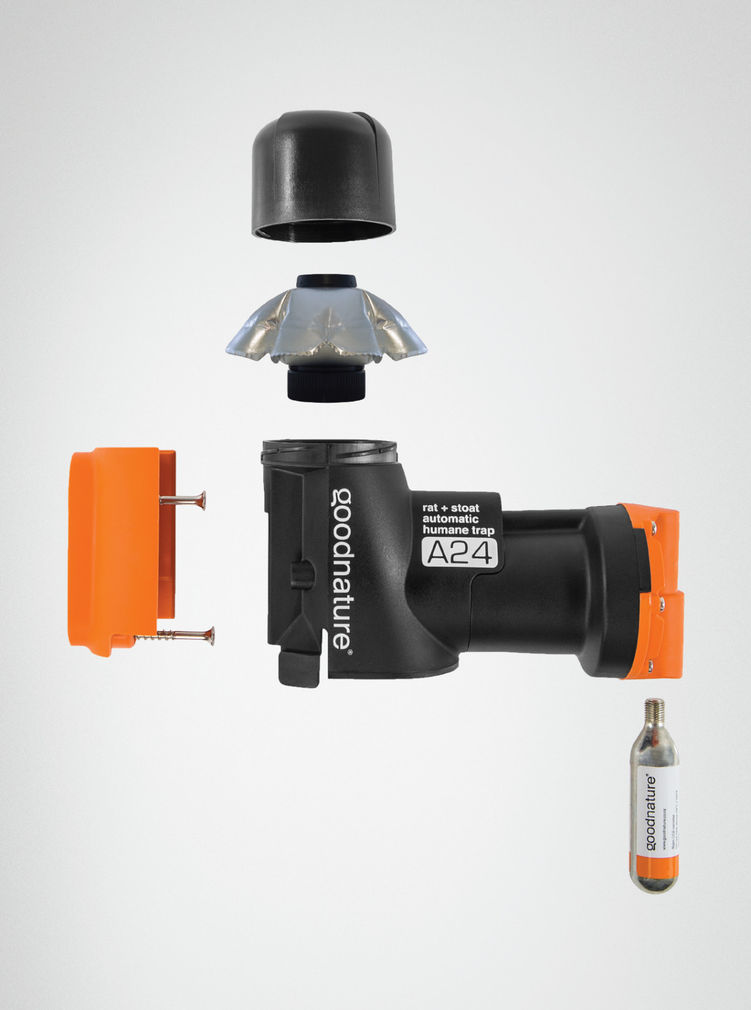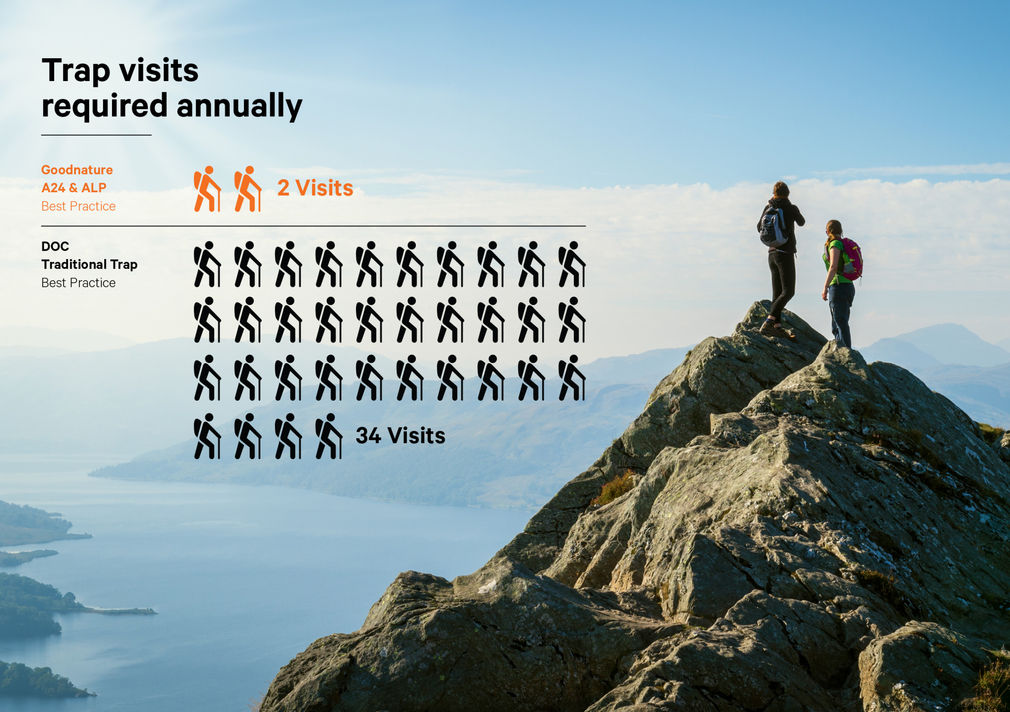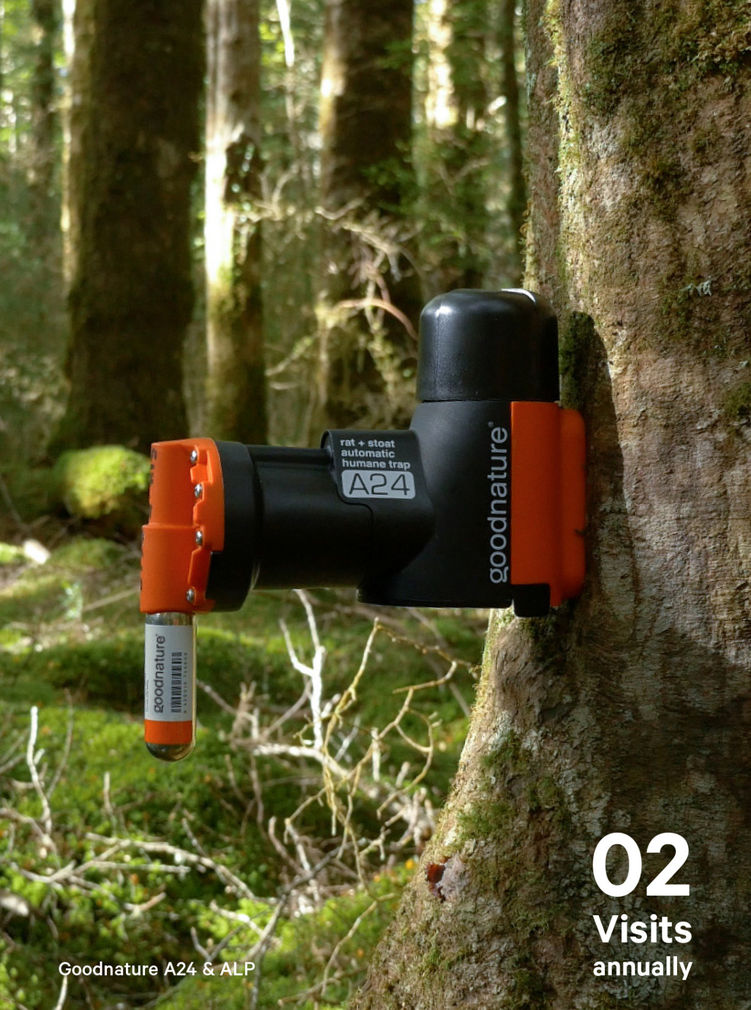The Goodnature A24 trap and new Automatic Lure Pump are set to transform predator control in New Zealand. The system will not only slash the labour costs of trapping by up to 90 per cent, but is also the most effective trap used to date by the Department of Conservation. And if that’s not impressive enough, it does it all without using poisons.
Purple Pin Case Study — Best Effect
Goodnature, Department of Conservation
A24 & Automatic Lure Pump
Background







Traditional pest control in New Zealand has relied on traps, poisons and physical barriers around sanctuaries. The Department of Conservation (DOC) alone spends more than $5 million each year on stoat and rat trapping, with the largest proportion of the bill being human labour. Traditional traps need resetting and re-baiting every fortnight, and with 180,000 traps around New Zealand, it’s a gruelling schedule.
But all this could be about to change. The A24 self-resetting trap, used in combination with the Automatic Lure Pump (ALP) – designed by Goodnature in partnership with DOC – is the first trap in the world to remain constantly active for six months. That means it takes just two visits per year to reset. With traps located in remote areas all around the country, this will be truly transformational for predator control, with an estimated 90 per cent cut in costs on trapping projects.
The impetus for the project came after DOC’s successful North Island kōkako recovery plan. Eight years into the sustained pest control programme, which covered a 500 ha area of Te Urewera Forest, DOC had recovered a population of just eight kōkako pairs to over 120 pairs. They had not only saved the population from disappearing, but also helped it flourish to the capacity of the trapped area. To maintain this level of growth, however, required constant control, which on a permanent basis would be cost-prohibitive due to the massive labour component.
Inspired nonetheless by this success, DOC saw that it could potentially reverse population decline with a more cost-effective system. So it partnered with the private Wellington company Goodnature and provided seed funding to design a trapping system with low labour overheads.
The Automatic Lure Pump (ALP) – designed by Goodnature in partnership with DOC – is the first trap in the world to remain constantly active for six months. That means it takes just two visits per year to reset.
Goodnature developed a modern trap with a spring-loaded striker that resets itself with a small, pressurised CO2 canister. The canister allows 24 resets (hence the name). The mammal is lured to poke its head inside the trap to access the bait, and the striker ensures an instant, humane kill. That’s potentially 48 dead predators per annum, per trap, with only two human visits.
The A24 has been in operation for a few years now, but the system has been taken to the next level with the new pump. Over the six-month self-resetting period, the ALP drip-feeds bait into the trap. With no poison required, DOC workers don’t need to handle toxins, and there is no harm to a non-target animal that might find and eat the dead predator – be that a domestic cat or dog, or a native bird of prey.
“This is a paradigm shift in conservation and is transformative for DOC,” says Robbie van Dam. “It was achieved by applying design principles to the Department’s core criteria for a new trap – A-class humane, toxin-free, targeted, ergonomically easy to use and labour-saving. And it’s not just for DOC. New Zealanders of all abilities can now contribute to conservation efforts.”
The holistic system design considers the target pest’s experience, the native species’ experience, the trapper’s experience, and also that of the New Zealand public. The traps work equally well in a person’s back yard as in a 5,000 ha conservation site. It is the first trapping technology in the world that can deliver large-scale, fenceless sanctuaries.
—Andrea Stevens
www.folio.nz